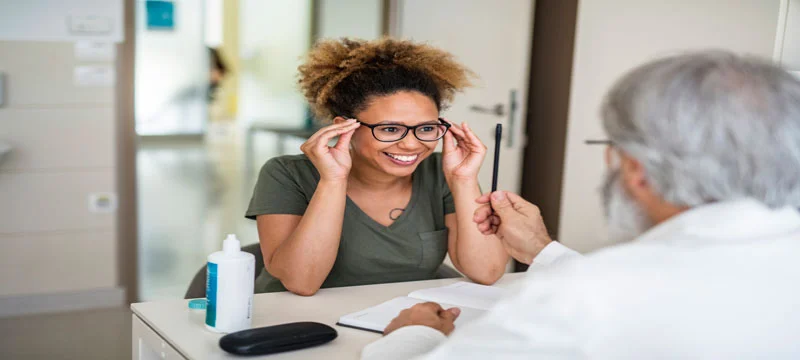Here’s an eye-opening idea. It’s possible you’ve missed taking care of one of the most important tasks for your child’s education and health: getting your child an annual eye exam.
The American Optometric Association (AOA) reminds parents that good vision is vital to a child’s success in the classroom. “Reading, writing, chalkboard work, and using computers are among the visual tasks students perform daily. A child's eyes are constantly in use in the classroom.”1 In fact, the AOA has recommended “making vision exams an annual” tradition.2
School-provided eye exams are not enough
While they can help identify some problems, experts warn that vision testing at school is no replacement for an actual eye exam.
Often school testing uses Snellen eye charts, which are those charts with lines of letters that get smaller as you move down. While those charts can help detect blurry distance vision, “only optometrists and ophthalmologists have the advanced training and clinical tools to perform a thorough evaluation of your child's eyes and vision,” writes Gary Heiting, OD and senior editor of AllAboutVision.com.3
The American Optometric Association's (AOA) 2015 American Eye-Q® survey says it more plainly, “89 percent of those surveyed incorrectly believe simple vision screenings, such as those occasionally offered at schools, are an effective way to detect vision problems.”2
Worried about the cost of an eye exam? Vision insurance can help
In fact, you may already have vision insurance covering an eye exam for your child. All Affordable Care Act (ACA) health insurance plans sold through the Health Insurance Marketplace are required to include coverage for a number of children’s preventative health services without charging a copayment or coinsurance.4 That list includes vision testing.
If you aren’t covered already or want to make eye testing an annual tradition for the whole family, vision insurance from a number of trusted insurance carriers covers exams and often includes a benefit to help pay for glasses or contacts if they are needed.
Remember, though, most vision insurance plans cover only one routine exam a year. If you have already had an eye exam in the last 12 months, check with your provider to find out when you or your family are eligible for benefits again.
Spotting vision problems in your children
Children can’t always tell you when they are having vision trouble, but the AOA recommends watching for these possible signs:
- Frequent eye rubbing or blinking
- Short attention span
- Avoiding reading and other close activities
- Frequent headaches
- Covering one eye
- Tilting the head to one side
- Holding reading materials close to the face
- An eye turning in or out
- Seeing double
- Losing place when reading
- Difficulty remembering what he or she read 1
Notes
1 American Optometric Association. 2018. “Children’s Vision: School-aged Vision: 6 to 18 Years of Age.” Retrieved from https://www.aoa.org/patients-and-public/good-vision-throughout-life/childrens-vision/school-aged-vision-6-to-18-years-of-age#3
2 American Optometric Association. 2016. “Back-to-School Eye Exams Essential to Helping Children Succeed in the Classroom.” Retrieved from https://www.aoa.org/newsroom/back-to-school-eye-exams-essential-to-helping-children-succeed-in-the-classroom
3 Heiting, Gary, OD. 2019. “Eye exams for children: Why they’re important.” Retrieved from https://www.allaboutvision.com/eye-exam/children.htm
4 HealthCare.gov. Preventive care benefits for children. Retrieved from https://www.healthcare.gov/preventive-care-children/




